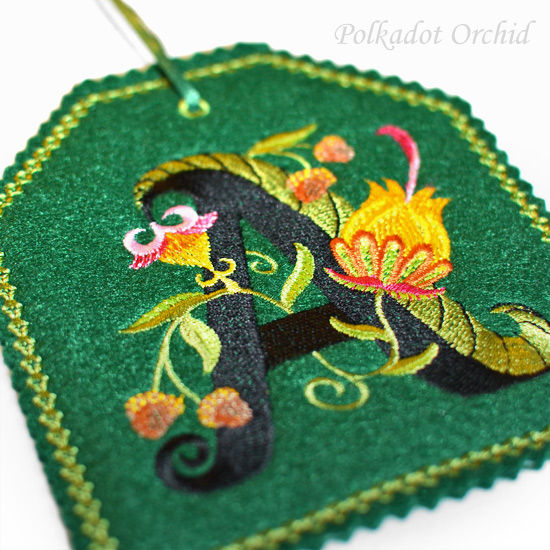A lot of my work involves fulfilling special requests. Most of the time, they are variations on something I've already done. (For example, stitching my custom nautical flags on a tall t-shirt rather than the standard cut.) Sometimes, however, I get a request that is truly unique. Late last year, I had a request for a custom commemorative hoodie from a group of USMC spouses.
I am local to the USMC base at Quantico, Virginia. The base trains a lot of marines for a variety of different courses: Officer Candidate School (OCS), The Basic School (TBS), and host of smaller courses. A lot of these training and selection sessions are grueling, with men and women pushing themselves to the limits of physical and mental endurance. The officers who slog through the mud together often design a commemorative t-shirt before they part their separate ways for other assignments.
 |
This is what they were thinking of using
for a silkscreen design. Note how it fills
up most of the hoodie, only uses one
color, and has the text below the tags. |
In my case, I was contacted by a group of military spouses who wanted their own commemorative hoodie. (The spouses often form close-knit support groups while their significant other is frequently absent for training.) Initially, they were thinking of getting their hoodies silk-screened. However, silkscreened garments begin to flake after several wash cycles, whereas embroidery wears better over time. So, they wanted to compare their options.
Settling On a Design
The spouses had already come up with a design of what they were thinking of using for a 1-color silkscreen design. It had a set of dog tags with three lines of text below it, which would take up most of the front of a red hoodie. They provided me with a basic graphic and then I came back with a mock-up photo. Since the design was simple, I was able to give them a mock-up within 24 hours.
Based off what I knew they wanted, I recommended a few changes for embroidery within the mockup:
1) Embroidery doesn't require a separate silkscreens for each new color, so I proposed using more than one color. Namely, two shades of grey for the dog tags, and one shade of another color for the text. Some of spouses had expressed concern about a red hoodie, so I created my mock-up using yellow text on a navy blue hoodie, with the note that the colors were flexible.
2) Since I didn't have to worry about flat white text blending in with a flat white set of dog tags, I suggested overlaying the text over the chain of the dog tags. I thought that having the two elements overlap would create a more fashionable garment. I thought this would be particularly nice since most of the members of the group were women.
 |
The design proof. There are several changes to the
original design for the sake of fashion and production. |
3) I also changed a few styling details. For example, the original had the fabric of the garment show through parts of the dog tag for the text. I wasn't limited to only one color (I can thread up to six colors on my machine at once), so I used another shade of grey. I knew that stitching the text on top of the tag was the best method for ensuring that the text would look good on a finished garment. (As opposed to trying to define the tag so that the fabric showed through. At this scale, that would be difficult to do giving that I'm working with thread and not ink.) I also changed the chain a bit. The original had a line of little, disconnected circles for the chain. I adapted the design to something that would be more production-friendly.
Why is the Chain More Production-Friendly This Way?

Creating an embroidery design off of a graphic requires re-drawing every single element of the design into the computer along with notes for the computer about what types of stitches need to be used for each element. It can be very time consuming, so in this case, I picked a method that would save time both for creating the design and stitching it.
You see, I could draw a tiny little circle (individually drawing it in using a mouse or tablet on the computer screen) for every single one of those little balls on that chain. This would involve drawing the circle and then telling the computer the stitch type (column) and the direction of stitching for every single little dot. It takes about 10 seconds to define each dot, but then I need to make sure they're in the right places, all the same size, with the proper stitch direction, and then I'd need to audit the stitching order and sequence to ensure the machine isn't going to stitch them in a wonky way. It may easily take an hour just to create the chain using this method.
If it was really, really necessary to match the graphic exactly, I could even tell the embroidery design to trim the thread after stitching every single one of those little circles, so there's no connecting thread between each circle. This would, mind you, add about almost half a minute to the total stitching time for every single trim once I was actually stitching this out. I think there are about a 100 little dots in that original graphic...
I didn't see a point to adding another 40-50 minutes to the time it takes to sew out each hoodie just for the sake of copying the graphic exactly. Instead, I opted for using a motif stitch. With this, I merely define a path, and then specify a repeating motif to be placed along the path. From there, I can adjust the spacing between the motifs. This gave me a similar look, but with a lot less work. This motif uses less thread than little balls of satin stitching, so it stitches out more quickly and allows text to be layered over it more easily. I also liked the idea of using a decorative motif because I thought it created a much more interesting and beautiful design. I like the contrast between the motif stitch on the chain, the fill stitch of the dog tags, and the satin stitches of the text and dog tag shadow. (Yes, I think a lot about my designs. Converting graphics into embroidery, or digitizing, requires thinking through lots of minute little details, which is why many embroiderers do not digitize.)
Approval
I sent three photos to my clients, noting that some things like text and hoodie colors were flexible. One was the design proof I shared above. The other two were mock-ups to show what the front and back would look like for the finished garment. I also quoted them a price, which was higher than silkscreening because embroidery is more labor intensive.
 |
I sent this mockup to
show human scale. |
 |
Some spouses wanted
their name on the back. |
They decided that they liked the design better and would be willing to pay a little more for it. By the end of the week, they had their hoodies in hand. (It was, after all, a local delivery that did not require shipping to the client.)
 |
| The Finished Commemorative Hoodie |
They were thoroughly happy with the final result. Pretty much everyone commented on how nice they were when they were handed out. One spouses told me that she received several compliments wearing it for the first time on base.













